Creators, Makers, and Doers: Jill AnnieMargaret
Posted on 9/22/15 by Arts & History
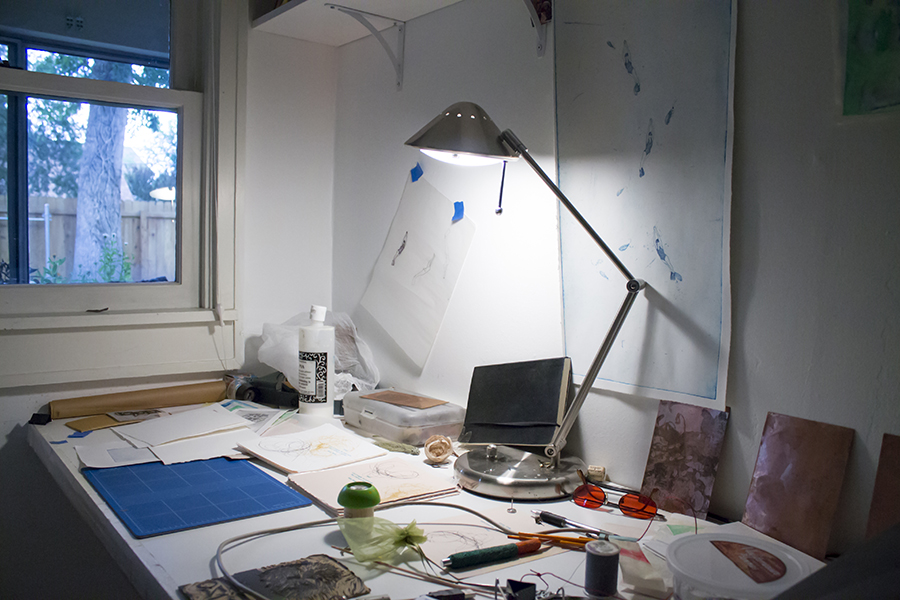 Jill AnnieMargaret recently completed a large scale profound project “Hair Story/ Her Story,” that impacted many people from Boise to South America and places in between. Before undertaking her next big artistic project, Jill is taking time to reflect and observe to allow ideas an opportunity to gestate. But she is plenty busy. In addition to working as a professional artist, she also teaches at Boise State and serves as mentor to printmaking students. Jill doesn’t stop there. She is also planning a solo exhibition in March in Baker City, Oregon, and coordinating the third meeting of the Rocky Mountain Printmaking Alliance. This meeting brings printmakers to Boise from all over the West to share ideas and contemporary practices.
Jill AnnieMargaret recently completed a large scale profound project “Hair Story/ Her Story,” that impacted many people from Boise to South America and places in between. Before undertaking her next big artistic project, Jill is taking time to reflect and observe to allow ideas an opportunity to gestate. But she is plenty busy. In addition to working as a professional artist, she also teaches at Boise State and serves as mentor to printmaking students. Jill doesn’t stop there. She is also planning a solo exhibition in March in Baker City, Oregon, and coordinating the third meeting of the Rocky Mountain Printmaking Alliance. This meeting brings printmakers to Boise from all over the West to share ideas and contemporary practices.
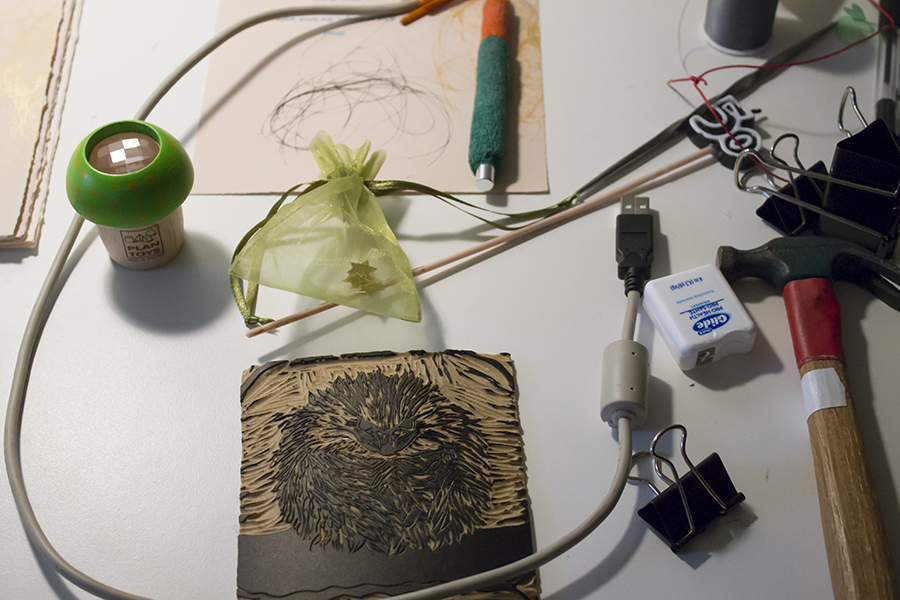
What is your preferred medium?
Working on paper. Printmaking is definitely my medium, but within that there is a lot of variety as far as what it offers. In terms of printmaking in general, I would have to say I favor copper plate etching, but then in terms of just being an artist, there is something so appealing about just drawing with a pen on paper. It’s about the simplicity of it. Those areas are really where I have been putting my focus since I have been practicing as an artist.
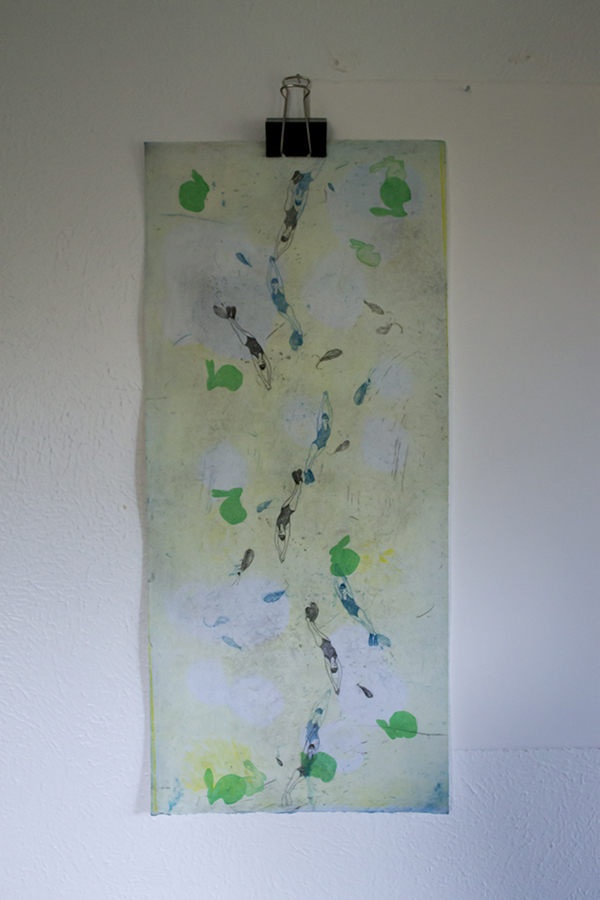
What is appealing to you about etching and/ or drawing?
I am working on drawing right now. I am mostly making little daily sketches that are based on observation. The drawings can be so immediate. It’s just pen on paper. You can make something really quickly. With etching, it’s a long process. You have to prepare the plate. Put the ground on the copper plate. The materiality of working on the copper and the metal itself is beautiful. Although I don’t like to directly transfer images, I really do enjoy the act of drawing on the copper. I think the two are at polar opposites with the immediacy of the drawing on paper and the time lag of the process of copper plate etching. Your drawing changes when the plate goes into the acid bath and again when you finally get to the point of printing the image through the press. The printed line as a result of the etching process has always been appealing to me. There is a lot of time between, when I work, from the point of getting inspired to work on a copper plate to the time of making an actual impression on paper. I think that time can help refine ideas.
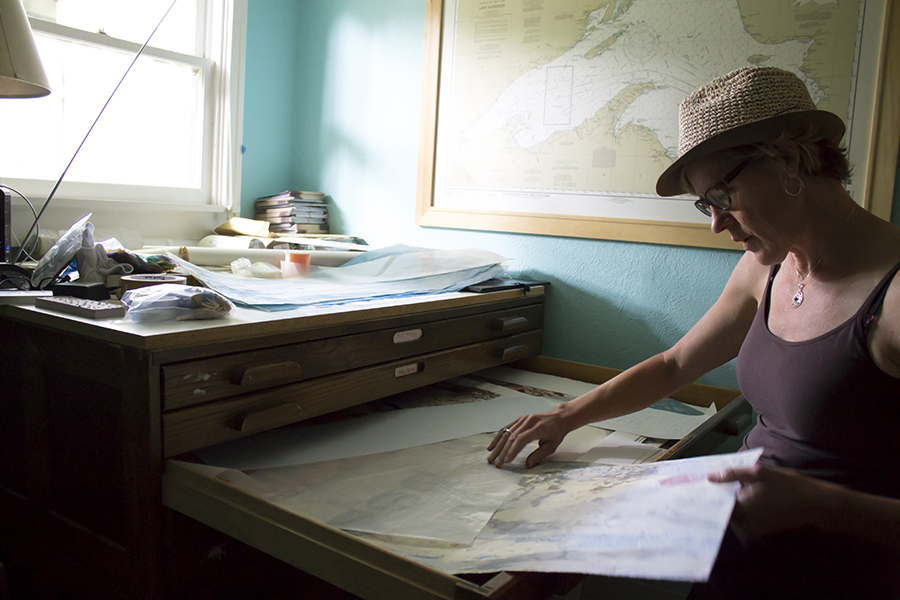
Can you talk about your process?
It’s interesting because I have been thinking about what my process is. This summer is the first summer in a while that I don’t have a big trip planned. Last year I went to Argentina for a month and I have been traveling internationally, every summer, for the past four years. I don’t have any big projects on my plate this summer. I have been weeding through my house and taking the time to look at what I am doing and what I have done. I’m collecting my thoughts. I am hoping to fertilize the soil in terms of what comes next. I have just finished this huge project, the Hairstory-Herstory project. I can’t really tell you the process always looks a certain way because I approach each project somewhat differently.
In terms of process, I like not knowing what’s going to happen. I will have a general vision for where a project is going, but hopefully in the end it will be way better than I could have imagined it to be. When I started collecting my hair in 2006, I could not have predicted that it would lead to Shed and then two years later to the Hairstory-Herstory project. If I was making a traditional series of etchings, I may be able to better predict what that process will look like. It will require a sequence of working back and forth on the copper and dipping in the acid to etch. Then working through a series of states. I will finish a plate and it will be ready to proof, print, maybe edition, and then be framed. That process if fairly straight forward, but I tend to think outside the box and I try to expand my work beyond the traditional which opens up a different Pandora’s Box to other problems or other challenges later, like who is interested in showing the work, who might be interested in purchasing the work. Where do you put the work when it is finished if it takes up a lot of space?
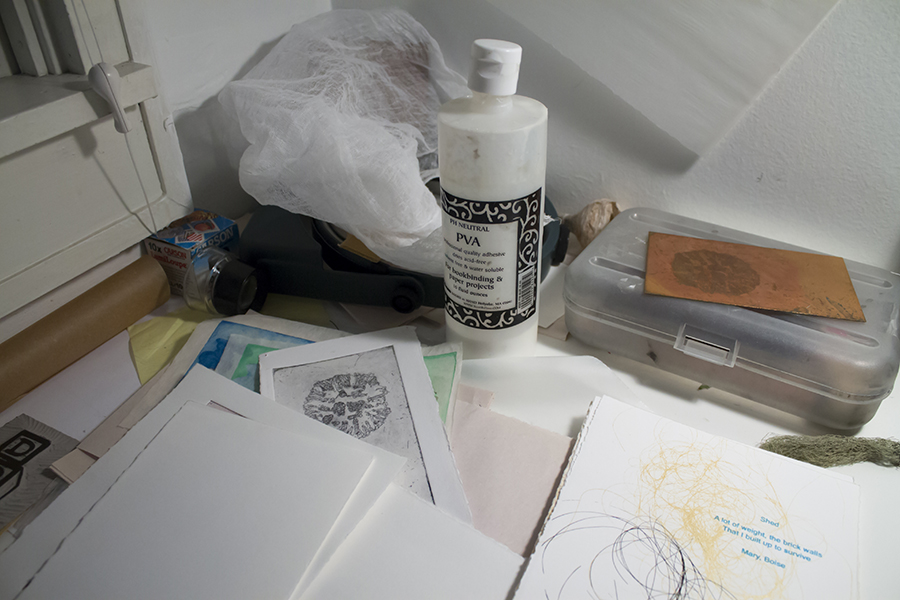
What is your relationship to your studio space?
Any space is what you make of it really. I would like to think of myself as being somewhat flexible as to what a day in the studio will look like. If I am traveling, the day in the studio is my note pad and a pen. I could be anywhere in the world or on a train. The idea of the studio is tough. As a traveler, portability is important. As a printmaker, you generally need heavy equipment, chemicals and ventilation. Sometimes we think we need more than we really need. Some days I need a press that can print an eight-foot woodblock, a tank of acid and an exposure unit. On other days I just need a clear space to put a pen and a piece of paper.

Where do you find your inspiration?
Anytime you have any glimmer of inspiration, you need to hang on to it like you are hanging onto the edge of a cliff because it’s not going to come by every minute. Certain times in my life I have been super inspired. I have been fortunate to have a lot of experience where I feel an intense amount of inspiration that has fueled a lot of years of work for me, but it is also something that can easily be shut off. There is a quote from Joseph Campbell that says, “You need to seek inspiration the way a man with his hair on fire seeks a pond.” You have to go after it.
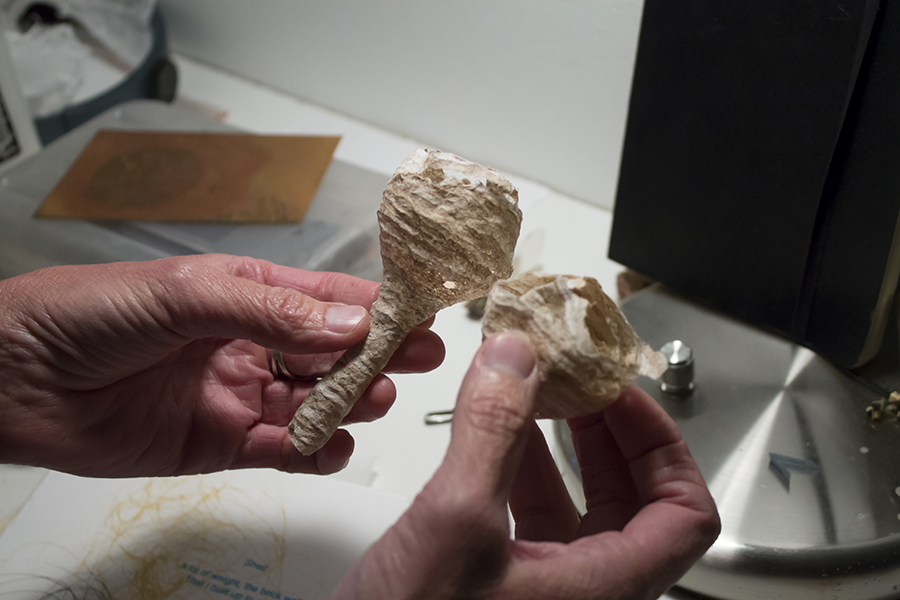
What are you working on now?
There is nothing new yet. I am working on some little sketches right now. I am not doing much at the moment, but I am gearing up to. The Hairstory-Herstory silk installation and audio recordings will be shown at Idaho State University in February, so I am working on expanding the installation. I also have a show in Baker City in March 2016. It will be all etchings, monotype and collagraph. Kind of a retrospective of some older etchings, along with new etchings that will include divers and imagery from my dreams and hypnotherapy. I am also working on some banjo stuff. One thing that I realized is that maybe I really am a songwriter. I am planning to record my songs this fall.

What are your opinions of the art community here?
There are a lot of great resources that I have been supported through. In terms of the infrastructure, it’s really good through the city and the ICA and especially for me, through the university. I feel supported in some ways and in other ways there seems to be some lacking. A certain type of work is really appreciated here but work that tackles more difficult issues isn’t well received or understood. It depends which side of the equation you are looking at. There are some really interesting artists in town. I used to have a critique group with some of my colleagues. Every few months we gathered and talked about each other’s work. That ended a few years ago, but it would be nice to have that again. A lot of people that are in the art community are former students too, so that’s great.
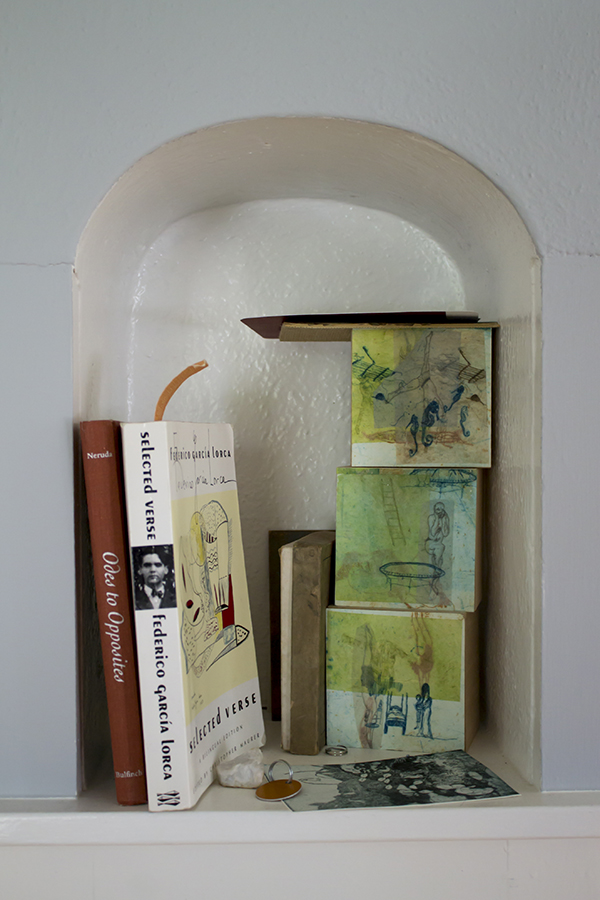
Can you elaborate on what resources are lacking?
I think the main resource would be a municipal gallery. A really nice city gallery that could possibly be peer reviewed and that would be willing to show some challenging artwork. I think we are really missing good public exhibition space. Maybe it could be city owned. We don’t have anything like that do we? Someplace with rotating exhibits that is a public space and not heavily edited.
As far as support, I think there is tons of support. If there is an artist in town that hasn’t applied for a grant and they are complaining about lack of support, then they just aren’t making the right effort. There really is good support. There are quite a few different avenues.
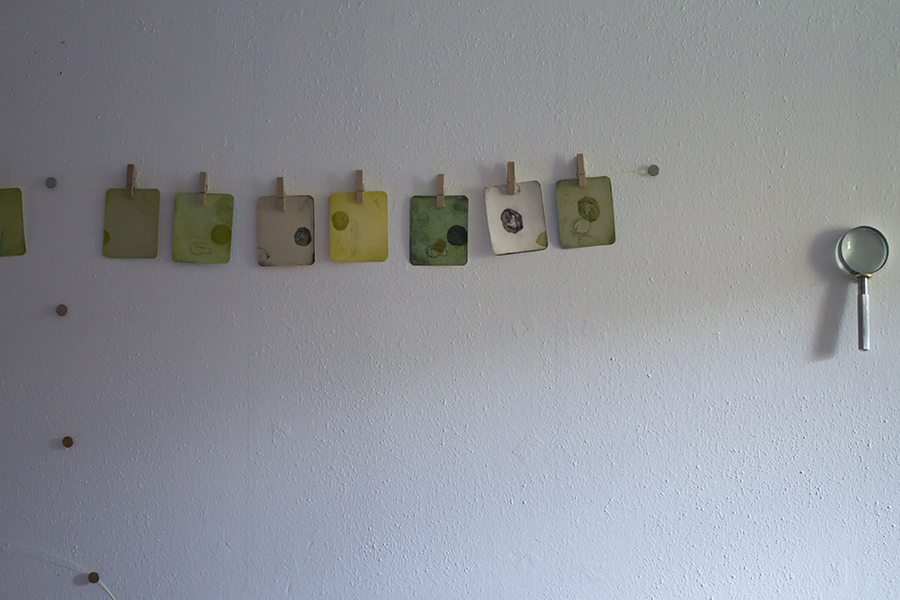
Do you sell work? Where do you find the avenues to sell the work?
Fortunately, I don’t have to sell my work to make a living. I have a regular paycheck. That’s a relief. I have the privilege of making more challenging work because I do have a regular job. It would be great to have the best of both worlds. Some of my work, I think is really difficult to sell, because it has to live in the right place. It is delicate and exposed. I am not sure how much work or what kind of work sells here and I ask myself, do I even want to make work just to sell it? Will it make me a legitimate part of the community? I am not sure. I wonder if selling my work gives me more value as an artist? I believe there are intangible benefits of what we do as artists, that my work is not a commodity. I don’t make a product. I like to think I make something that makes the world a better place or gives someone a different perspective or way of looking at something. Hopefully making art inspires other people, but maybe that’s a really romantic and outdated idea on my part. If I assigned my value as an artist to the amount of work that I have sold, it would be laughable. I like to think about all of the support that I have received through grants. That has really added value to my work as opposed to just selling work. The grant support has allowed me to show in Argentina and the UK among other international locations. Of course I would love to do both. Perhaps the work that I show in Baker City next year will sell.
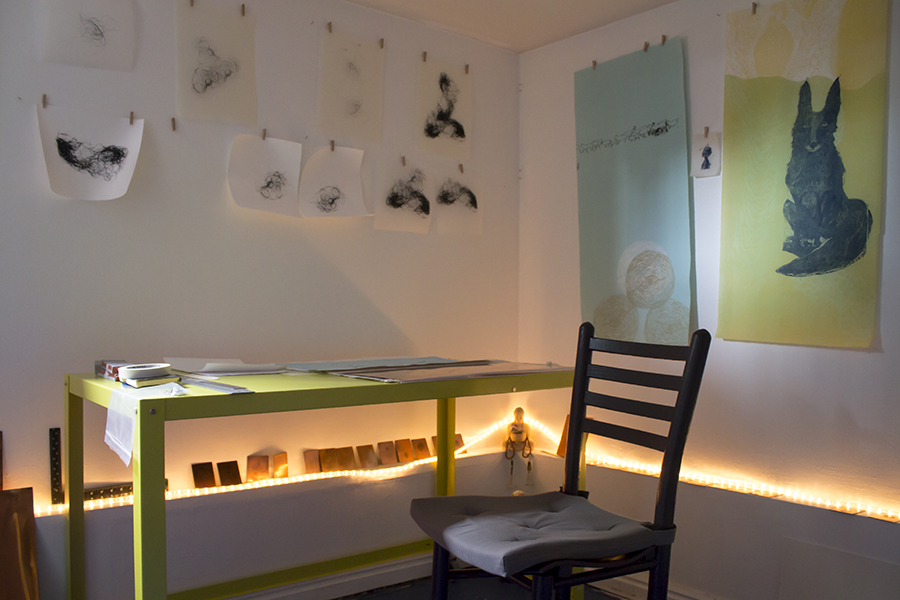
Would you say that you have been able to make a living as an artist?
No, definitely not. I am making a living as an educator. I am making a living as a professional artist who gets paid by the university. My art got the job. If it wasn’t for my education and all of the work I did for that, then I wouldn’t be where I am now. I guess it depends on how you look at it. I got the job I have because of my art and because of my support and willingness to be an advocate for students. I guess the answer is yes then. Yes in a way, but not because I am selling my art, but because I am teaching and working for the university. I am a service in the teaching capacity. That leads to things like helping start the Rocky Mountain Printmaking Alliance. I feel like I am functioning in other ways than just being a studio artist. I am making a living in the classroom and by being a leader in the printmaking field in some ways. It’s tough because its yes and no. Yeah, I am an artist and that’s what got me the job. You can’t be a teaching artist without first being an artist.
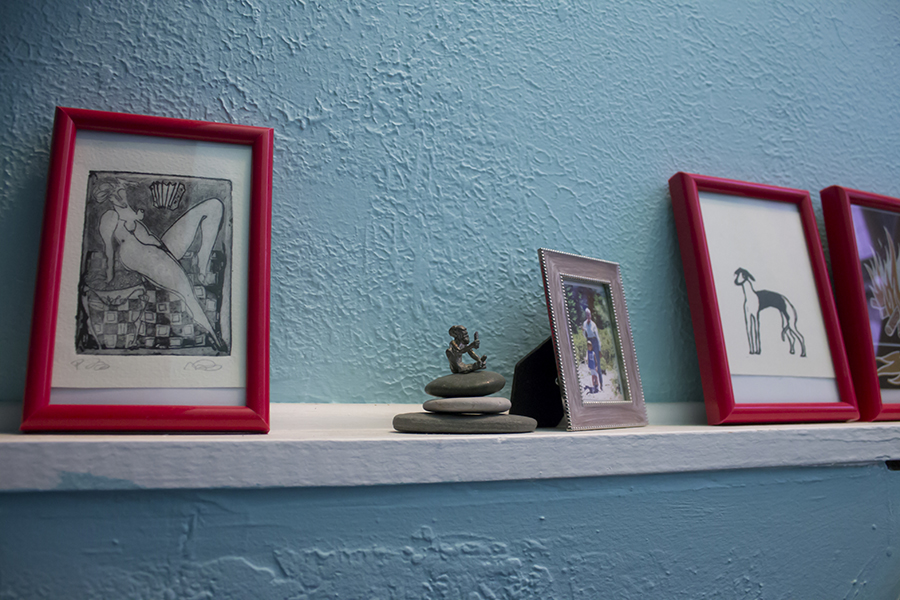
Do you have any advice or inspiration for other artists?
I feel like I try to do that with my students, but in terms of other artists, that’s tough.
What do you tell your students?
I really try to encourage a good work ethic. I hope they care about what they are doing, because no one else is going to care about it more than they do. You have to show up and do the work. You need to know what your skills are because when you get out of school, you probably won’t make a living making your art. I hope there are things that I can offer in the classroom like working well with others, working in a community/ communal studio can help you get a good job. You have to show up. But, beyond that, I don’t know. All artists are so different. I think you have to create your own head of steam and really want to do what you do and you have to believe in yourself. Don’t be lazy.
Creators, Makers, & Doers highlights the lives and work of Boise artists and creative individuals. Selected profiles focus on individuals whose work has been supported by the Boise City Dept. of Arts & History.